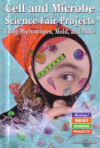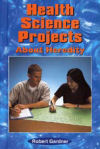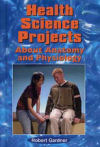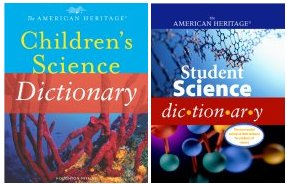Disease Detectives Additional Information
Information about the Discovery Channel Young Scientist Challenge (DCYSC) can be found at www.sciserv.org/dcysc/ (Science Service) and school.discovery.com/sciencefaircentral/dysc/index.html (Discovery Channel).
You can find journals written by the 2006 DCYSC finalists at school.discovery.com/sciencefaircentral/dysc/finalists/journals/main.html (Discovery Channel).
Articles about previous DCYSC events are available at http://www.sciencenewsforkids.org/pages/sciencefairzone/dcysc.asp.
Sohn, Emily. 2006. Eating troubles. Science News for Kids (Feb. 8). Available at http://www.sciencenewsforkids.org/articles/20060208/Feature1.asp.
______. 2006. Flu patrol. Science News for Kids (Jan. 4). Available at http://www.sciencenewsforkids.org/articles/20060104/Feature1.asp.
______. 2005. Food for life. Science News for Kids (April 20). Available at http://www.sciencenewsforkids.org/articles/20050420/Feature1.asp.
______. 2004. Packing fat. Science News for Kids (Oct. 27). Available at http://www.sciencenewsforkids.org/articles/20041027/Feature1.asp.
Books recommended by SearchIt!Science:
 |
Cell and Microbe Science Fair Projects Using Microscopes, Mold, and More— Kenneth G. Rainis
Published by Enslow Publishers, 2005.
Explore the fascinating world of microbes and cells in this collection of science projects. The experiments investigate questions such as, “What makes a prokaryote?” “What powers cells?” and “How do cells eat and move?” You’ll learn about the different parts of cells, cell processes, bacteria, fungi, and protists. Research molds and disease-causing microbes, test how effective pasteurization is, and discover just what is in that puddle on the side of the road. Complete with black-and-white illustrations and diagrams, science fair ideas, a microbe-identification guide, an appendix on microscopes and microscope- processing programs, a list of science-supply companies, further readings, and an index, this is a comprehensive guide to the microscopic realm. |
 |
Health Science Projects about Heredity — Robert Gardner
Published by Enslow Publishers, 2001.
This book is about genetics, the science of heredity. It is packed with dozens of step-by-step experiments and activities you can perform yourself. Each activity includes an introduction, safety hints, a list of scientific-equipment suppliers, and an index. Gardner marks the experiments that he thinks would make good science fair projects. Among them are Making Your Own Family Tree, Eye Color and Genes, A Three-Dimensional Model of DNA, and Cloning, Food, and Humans. |
 |
Health Science Projects about Anatomy and Physiology — Robert Gardner
Published by Enslow Publishers, 2001.
How fast do fingernails grow? What’s under your skin? How much air do you breathe? Can you swallow upside down? Test your reflex actions. Five chapters explore various aspects of the human body—Skin, Skeleton, and Joints; Muscles; Circulation and Respiration; Digestive and Excretory Systems; and Nervous and Endocrine Systems. Explore different aspects of anatomy and physiology and design experiments that might serve as the basis for a good science fair project. Each experiment includes a materials list and illustrations. A glossary defines scientific terms, and a bibliography and a list of Web sites identify areas for further exploration. |
Power Words
colon The longest part of the large intestine, in which solid waste collects before leaving the body as feces.
epidemic An outbreak of a contagious disease that spreads quickly and affects many people.
mucus A thick, slippery substance that covers and protects a part of the body, such as the inside of the mouth and nose.
rectum The lower part of the large intestine. The rectum is connected to the colon at its upper end. It is connected to the anus at its lower end.
virology The scientific study of viruses and the diseases that are caused by viruses.
Copyright © 2002, 2003 Houghton-Mifflin Company. All rights reserved. Used with permission.
